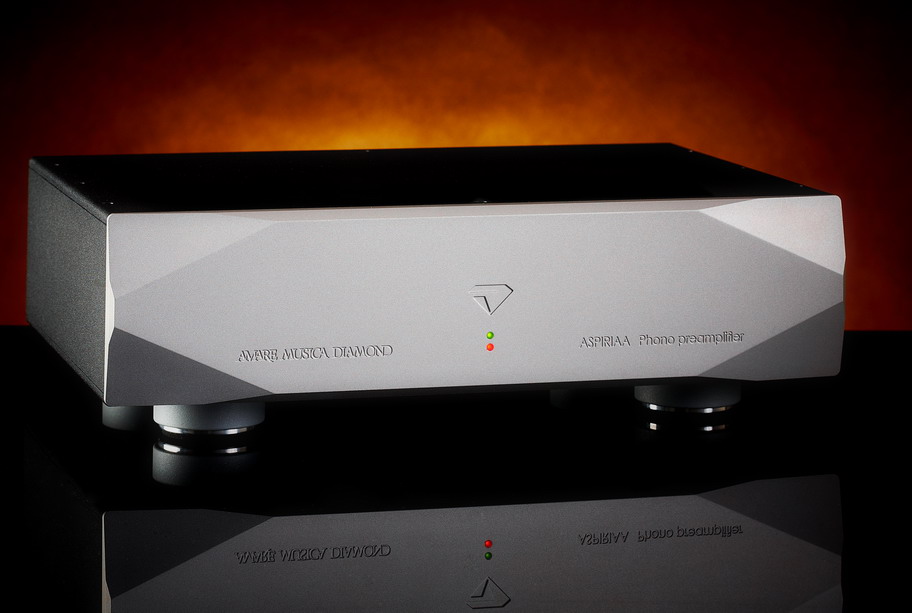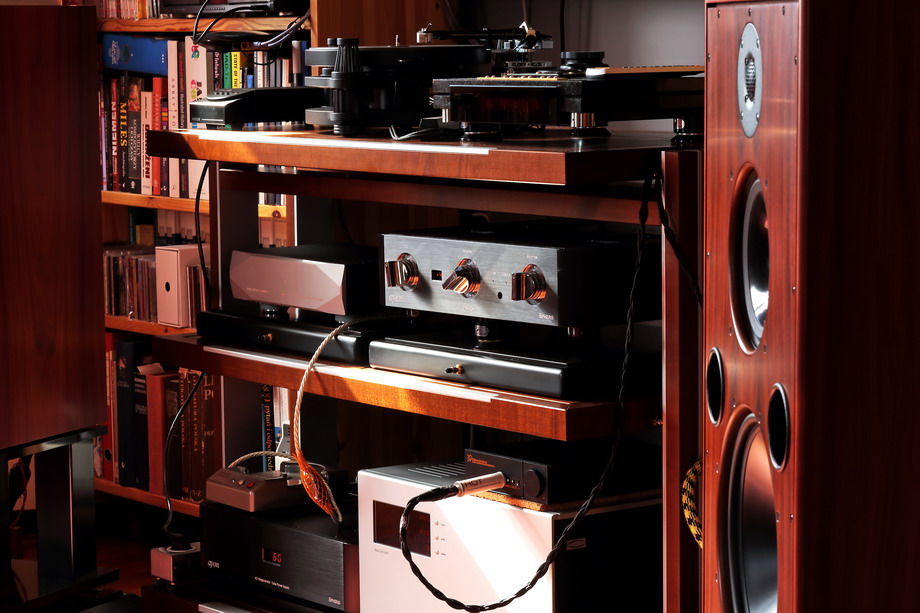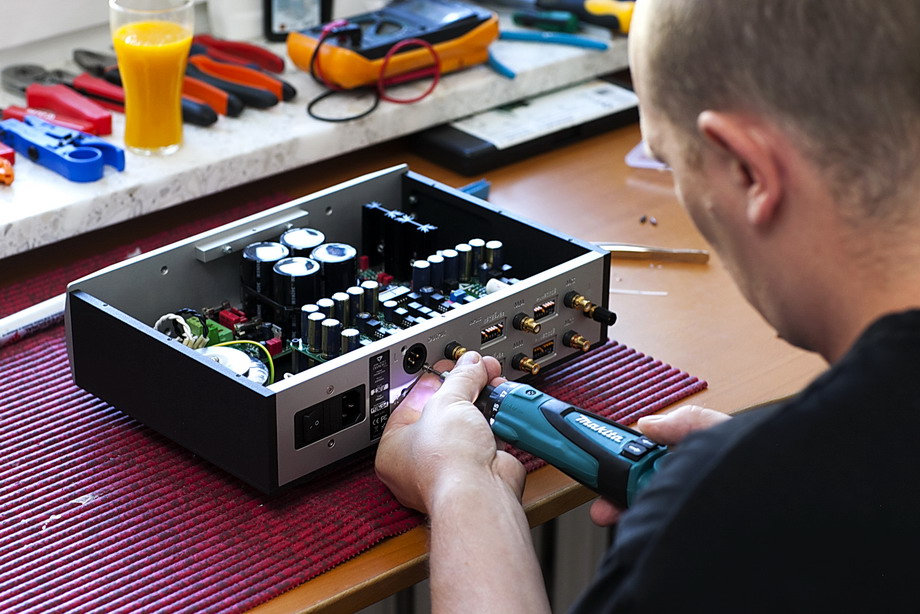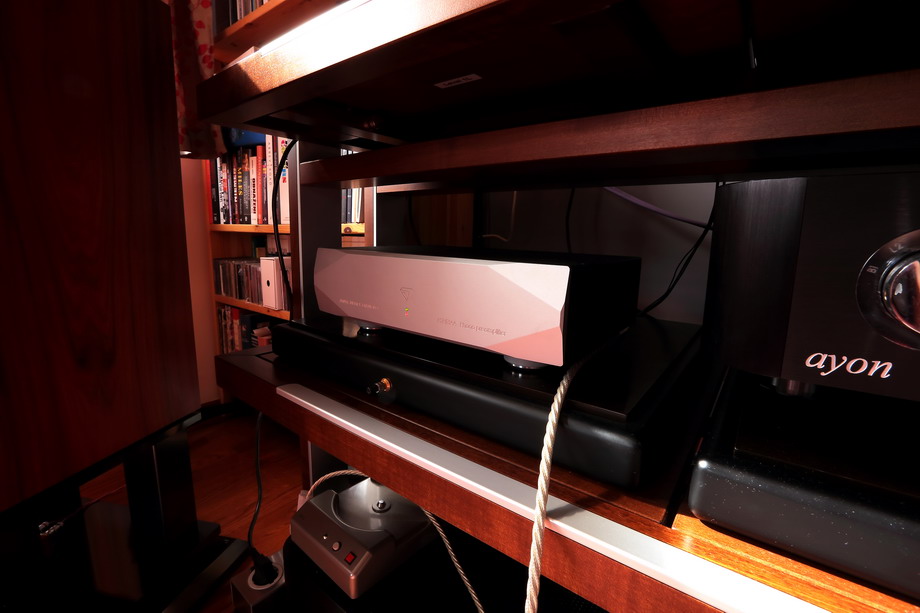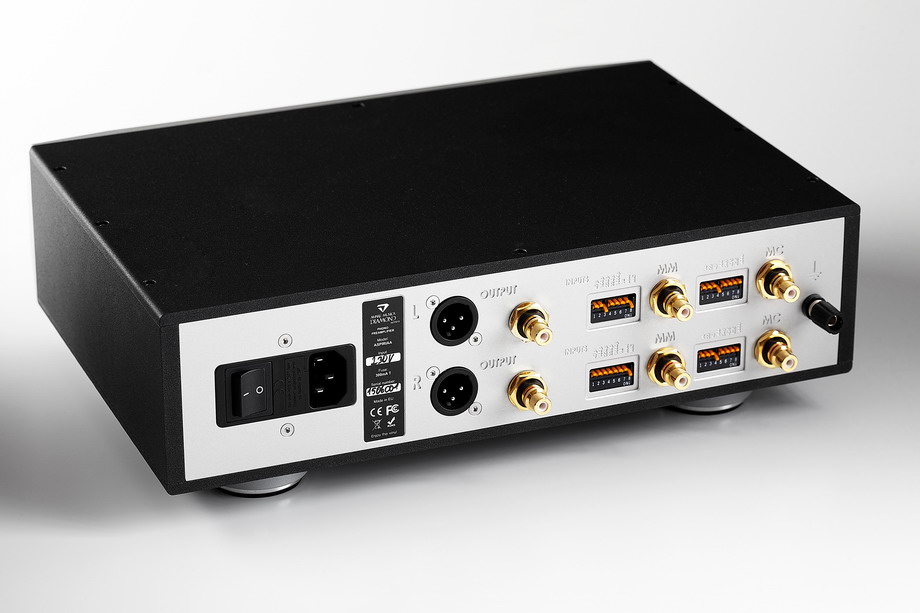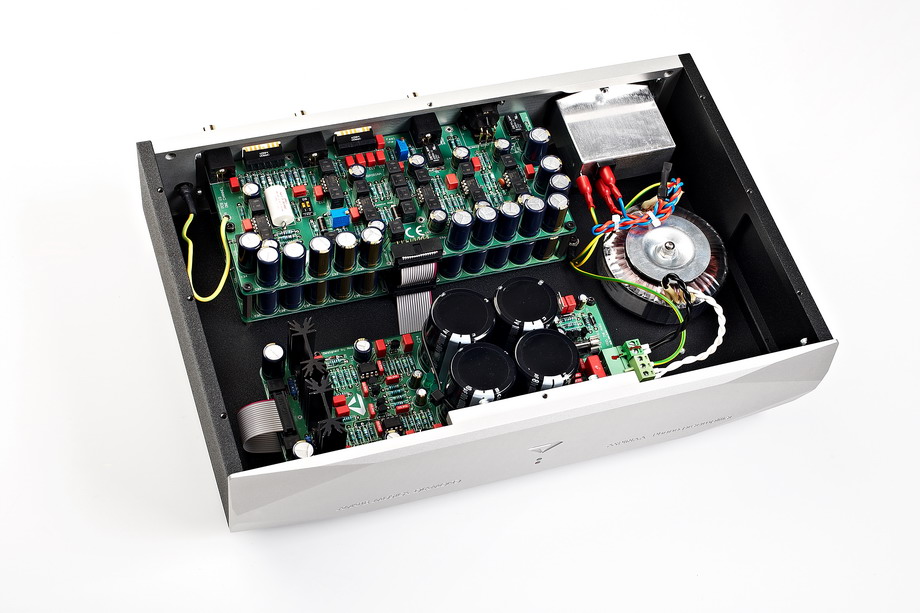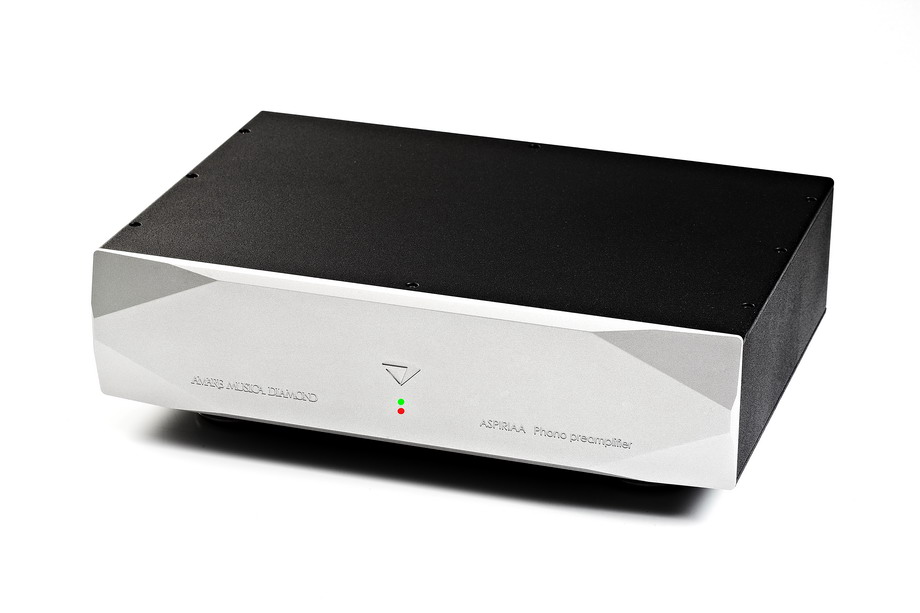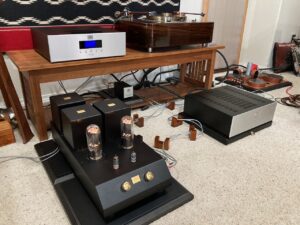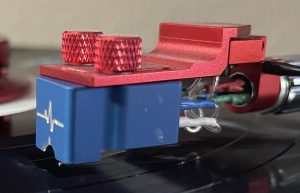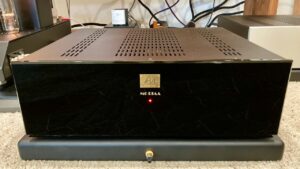When one of the fellow audio journalists from abroad asks me about the best Polish audio brands among few I always recommend Warsaw based Amare Musica. It is a company that from the very beginning, from 2012 when they debuted during Audio Show in Warsaw, always offered highest quality products. They debuted with the De Forest preamplifier using EML30A triodes that was priced at 20 000 PLN (plus VAT) and Trinity mono amplifiers (for 40 000 PLN plus VAT). The presentation was so interesting that it was rewarded by our magazine with BEST SOUND Audio Show 2012 Award (more HERE). What a debut!
Amare Musica is a high-end brand. If you followed their activity you must have noticed the absolutely professional way of their whole brand building process. They released first products only when they were absolutely, in every aspect, ready—looking great and sounding even better. They invested a lot in they workshop but also in promotional materials like professional images, also renders of products to come—that cost a lot of money so only some, usually major audio brands decide to do that. If you check out the externals and internals of any Amare Musica product you will realize that these are products from the Champion League.
Mr Maciej Lenar and Marcin Sołowiow decided to use chassis for their products made of high quality aluminum with a high gloss finish—they did it for above mentioned pre+monos setup, but also for the integrated amplifier called Entropy that we reviewed. But the next product, music server Diamond already used a different chassis—also made of aluminum but with mat finish which, in my opinion, looked even better. I can't be sure but I think that the whole line of products was called after this server—the new type of chassis they now make looks a lot like a diamond, so that's the line's name. The other line, where polished (surgical) steel replaced aluminum is called Silver.
ASPIRIAA
I don't know about you but when I saw the name of the product under review I couldn't help but smile. Those aware of high-end market should also appreciate a sense of humor of the people who came up with this name. ASPIRIAA seems to combine two words: "Aspire" and "RIAA". It clearly states they designers aspired (to perfect implementation of RIIA?) and RIAA is an abbreviation of Recording Industry Association of America, and is also used as a name of a correction curve used on signal written on vinyl records. The role of phonostage is to reverse what has been done to the signal before it was written on the record. Without RIAA correction one wouldn't be able to write deep bass on the record and treble would be hard to hear. So the name clearly states that the creators of this device aspire to make as good phonostage (with RIAA correction curve) as possible.
That's the first thing that came to my mind. But there is also a second one—I think that when coming up with this name both gentlemen wanted to imply sort of correlation to another fantastic, Polish phonostage - THERIAA manufactured by RCM Audio. RCM clearly stated in the name of their product that it applies the RIAA curve in THE (only) right way. So yeah, somewhat similar name also proves that people behind Amare Musica don't have a problem with their sense of humor. Which is good—we need as much sense of humor in audio industry as possible.
ASPIRIAA is delivered in a solid case, like a musical instrument. Sure, it comes at additional cost but I think it is a justifiable one—that's how a high-end product should be delivered to a customer. The device is not particularly big but it is quite heavy. Make and finish are both outstanding. Power supply is placed within the main chassis. Adjustments available for user include: input impedance, gain and input capacitance. Designers decided for a similar solution as the one you can find in RCM Audio Sensor2—DIP switches placed on the rear panel. For MM cartridges one can adjust capacitance and set impedance for 1 or 47kΩ , for MC ones one can adjust impedance. Signal is delivered to the device via RCA input, but there are both RCA or XLR outputs.
APIRIAA uses high quality Tablette feet from another Polish manufacturer, Franc Audio Accessories—Amare Musica and FAA successfully cooperate, which is a great thing. I'd like to remind you also that Franc cooperates in a similar way also with Bulgarian company APL Hi-Fi (you can find a review of their D/A Converter DD-S HERE).
RIAA CURVE
Before signal can be written down in record's groove it has to undergo a special preparation. One has to lower volume of low frequencies and increase level of high frequencies. A device on the other end of the chains, meaning a phonostage, has to reverse this process meaning boost the bass and cut the treble. This way what we get is a system that introduces pre-emphasis on the recording and de-emphasis on the playback. Later Ray Dolby used similar idea when developing his noise correction system, Dolby A, and later B, C and S.
Interestingly, for the first few years of Compact Disc's existence some tried to reduce noise for them in a similar way—they put an emphasis in high frequencies that later D/A Converter (initially in analogue, later in digital domain) was supposed to reverse. That is why if own present CD Player is to be compatible with some older discs it should be able to apply a de-emphasis on them. Unfortunately it is not the case and that's why some older CDs sound rather harsh when Player does not use de-emphasis.
Let's get back to vinyls. The RIAA pre- and de-emphasis curves are defined by three time constants, each of which is related to a corner frequency in the amplitude response. For the RIAA these three constants are: 75 µs, 318 µs and 3180µs and their respective corner frequencies are: 2122Hz, 500Hz and 50Hz (MM and MC cartridges generate output voltage proportional to stylus velocity—that's why the measurements are in μs).
Some other version of RIAA curve were developed and used, too. One of them is Enhanced RIAA, introduced by Neumann for his cutting lathes. It adds a fourth constant that does not attenuate frequencies above 20 kHz. As far as I know there is no official documentation of this curve. Sometimes this equalization is also called eRIAA.
In 1972 another version, called ICE RIAA, was proposed. It cuts off frequencies below 20 Hz (7950 µs) in order to protect loudspeakers from poor quality turntables. This function is often implemented with a switch called "subsonic cut".
RIAA became a standard around 1954. Before each label had its own equalization curve that differed from all others. It is still debatable today when actually all labels started to use the agreed standard—RIAA for their records. Some say that it didn't happen before 1960, some, like Michael Fremer (Stereophile) believe it happened very fast after standard was accepted—meaning already in 1954.
Since audiophile love "old" records and we actually don't know when the standard was widely accepted, some manufacturers today equip their phonostages with some sort of switch that allows user to choose between few curves like: Columbia, Teldec/DIN, EMI, RIAA and some others. One of the first devices that allowed that was produced by Zanden, but today even some inexpensive models give their users such a choice—like iFi for example.
I, personally, have been using phonostages that utilize RIAA equalization only and it was always enough for me. Maybe if I had a lot of mono records pressed before 1954 I would have made another choice, but that's just a theory as I never tried that.
A few simple words…
MARCIN SOŁOWIOW | MACIEL LENAR
Designers, co-owners
Our fascination with analogue started a long time ago. An idea to add a phonostage to our portfolio came to us after we built a prototype based on OpAmps that we made for our own usage. It was a very minimalist project just with a single RCA output and it told us we were going in the right direction. So we were pretty enthusiastic about making it a real product and we started to work on the circuit and at the same time also on the chassis for it. We assumed that it would be another product for Diamond line, so we knew how it would look like, and we wanted the circuit to work with any MM and MC cartridges available on the market (or with most, at least). We also decided that our product would sport balanced outputs.
One of the key elements of any phonostage is power supply. A voltage gain of a RIAA circuit is close to 1000 which means that any unwanted oscillation coming from power supply will be also amplified by this factor. Knowing that calls for a very, very "quiet" PS. Our power supply circuit uses an innovative solution with a low noise OpAmp working in active-error feedforward configuration. It's job is to make sure that in the output from power supply there are no unwanted oscillations. Large capacitance following bridge (large enough for many amplifiers) filters effectively oscillations and noise coming from power grid.
As for all our products also for APIRIAA we have chosen only high quality elements, among others: Panasonic FC, Vishay MKP 1837 Black, WIMA FKP, Mundorf, low noise metallized resistors, Vampire Audio RCA sockets, and XLR ones from Neutrik.
A high quality chassis is made using precise CNC machines of the highest quality aluminum—Gleich G.AL C250 Elox Plus. We have also chosen high quality anti-vibration feet—Ceramic Disc Tablette made by Franc Audio Accessories. We use Flight Cases for transport of all our Diamond devices, including ASPIRIAA.
A little heads-up—we are working on a tube phonostage with a separate power supply. We've already finished a prototype and currently we are preparing a commercial production of that device. We hope that this product will be released still this year.
SOUND
Records used during test (a selection):
- Smoke Sessions - Vol.1, Smoke Sessions Records SSR-1401, "Limited Edition Collection | No. 193/500", 200 g LP (2013); review HERE.
- Ben Webster, Old Betsy - The Sound Of Big Ben Webster, STS Digital STS 6111129, 180 g LP (2013).
- Billie Holiday, Songs For Distingue Lovers, Verve/Classic Records AS AVRJ 6021, "Special 45 Edition, One-sided", 2 x 200 g LP (1957/2012).
- Charlie Haden, The Private Collection, Naim Label LP110, 3 x 180 g LP (2000/2008).
- Depeche Mode, Fragile Tension/Hole to Feed, Mute Records, 12BONG42, 2 x 180 g, maxi-SP LP.
- Marek Biliński, Best of the Best, Bi.Ma. BiLP-01, 180 g LP (2014).
- Metallica, Masters Of Puppets, Asylum records/Warner Bros. 470908-1, "45 RPM Series", 2 x 180 g LP (1986/2008).
- Miles Davis, Birth of the Cool, Capitol Records T 762, LP (1957).
- Nat 'King' Cole and the Trio, After Midnight, Columbia/Analogue Productions 28180, 3 x 180 g 45 rpm LP (1957/2010).
- Skalpel, Transit, PlugAudio PL02, 2 x 180 g LP (2014).
- Wes Montgomery & Wynton Kelly Trio, Smokin' At The Half Note, Verve/Universal Music K.K. [Japan] UCJU-9083, 200 g LP (1965/2007).
Taking care of even smallest details is what makes Amare Musica products similar to many that come from Japan. I rarely compare any producers with Japanese ones, as very few might aspire to this level of artisan-ship. In this case everything—chassis, materials, make and finish and components used for the circuit—allows us to be proud of this Polish phonostage and to compare with wonderful makings of Japanese audio industry. The ASPIRIAA is simply a remarkable product.
From experience I can tell that proper selection of high quality components, attention paid to vibration control, and so on, assuming that they are all parts of a good project, translate into certain qualities of sound. Like, for example, tangibility of the presentation. With ASPIRIAA this particular quality seems to be one of the key aspects of the sound. Even though this is not the most resolving sound I ever heard, imaging, ability to present a fast attack, a black background result in an overall remarkable presentation. One can hear these qualities even clearer than with more resolving devices that often impress with a fast attack which is then not supported with palpable instrument's "body". Often these devices present a two-dimensional images that lack depth.
The Polish phonostage renders wonderful, three-dimensional images of instruments placed rather closely to the listener. When analyzing presentation in regard to frequency range, what attracts attention is the lower midrange and upper bass. I didn't want to open my review with that, but listening to the music I couldn't help but thinking that I was listening to a tube device—the way ASPIRIAA rendered music reminded me for example a phono section of Convergent Audio Technology SL1 Legend and Audio Research G Series GSPre.
It was a very enjoyable, rich sound. It never lacked weight and was never too bright. I don't think that I could say that tonal balance is shifted down, but after a longer listening session I thought that there was a slight emphasis in upper part of the particular frequency range covered by a double bass. When it came to club music, like a double maxi-single Fragile Tension/Hole To Feed by Depeche Mode, I thought that there was a slight emphasis in the 100Hz area.
I already said, that this phonostage offered particularly enjoyable sound. One of the main reasons for that is the way treble is presented. It is rich with harmonics, long decays, lively and at the same time rather smooth, not to say mellow. It was particularly obvious when compared directly against my RCM Audio reference, but also against what I remembered from many other phonostages I reviewed. It is a well balanced sound but it is also clear that designers had a particular sonic effect in mind. Also Ole Vitus obviously wants to achieve similar sonic effect with his preamplifiers to some top tube phonostages like Phasemation EA-1000, for example.
There is still a significant difference between ASPIRIAA and most tube phonostages, maybe except for Manley Steelhead v2. Namely the ASPIRIAA's leading edge is fast and "sharp" while tube competitors usually tends to soften the attack. Also bass might be a bit warm and nice sounding but not due to any tonality manipulation but rather to the fact that it is particularly rich with harmonics. That's what makes it sound similar to the devices with very low distortion level. This is exactly why both, THERIAA and Sensor2 from RCM Audio offer so much better performance than most foreign competitors regardless of price level. This is also why acoustic instruments presentation was so realistic, so convincing whether I played the Charlie Hayden's 50th Anniversary concert, or another very special record, Smoke Sessions.
All these sonic features combined together result in a close, palpable, well balanced sound that would most of all satisfy fans of acoustic music—classical and jazz, maybe bit less those who prefer electronic music or rock. I don't try to say, that the latter sound bad—not at all. But basing on my listening sessions that's my personal preference list.
What much more expensive phonostages present even better is depth of the soundstage. With APIRIAA sound is presented rather close to the listener—which is not a bad thing, I'm just saying that adding more depth to the sound would be appreciated. Also both range extremes could have tad more energy—this would improve pace&rhythm. Other than that designers did a truly great job.
Summary
Fortunately I don't have to take sides in tube vs solid-state war. Firstly because I really don't care and secondly I think that any reasonable music fan will confirm, that today one can choose his system/its components basing on sonic qualities presented by them and regardless of which technologies they actually use, as these qualities are not so obviously "attached" to tube or transistor anymore.
ASPIRIAA offers a dense, rich sound with no signs of brightness or harshness and it does that having no tube on board. The tonal balance is simply right and the device is able to present different pros and cons of each recording and pressing. The presentation is highly enjoyable and it doesn't pretend to be delivered by a tube device. Designers simply managed to achieve similar sound qualities, adding good level of transparency and differentiation—only much more expensive tube model offer even more in this regard.
Plus the device is really well made—looks good and sounds great. Together with such Polish brands as RCM Audio and Zontek, Amare Musica creates Polish vinyl-related high-end class.
DESIGN
The chassis of ASPIRIAA is build up with aluminum plates. Front seems bit thicker than the rest of them. Whole chassis sits on high quality Franc Audio Accessories Tablette feet with ceramic balls. There are two LEDs on the front of the device: a green and a red ones, that indicated current mode. First the red lights up and after the circuit reaches working conditions the red turns off and the green lights up. I am sure it is a pure coincident but both, the colors and the distance between LEDs reminded me of an on/off switch used in one of the versions of Linn Sondek LP12.
On the rear panel one finds high quality, gold-plated Vampire Audio RCA and Neutrik XLR sockets using Teflon dielectric. Next to them there are four rows of miniature DIP-switches, one for each channel and separate ones for MM and MC cartridges. For MM one can adjust input capacitance within the range of 0 to 1000 pF at 47 kΩ or 1 kΩ (47/100/220/330/1000 pF), and for MC the impedance loading in the range from 5 Ω to 47 kΩ (10/22/47/100/249/475/825/1000 Ω). There is also a gold-plated ground post and IEC with mechanical switch and with mains fuse.
One can also choose on of four setting for gain although access to the DIP switches is a bit problematic. There are available for one channel on the bottom of the device, but to select gain for the other channel one has to remove top cover. I guess the designers wanted to ensure as short signal paths as possible, so while they were clearly sound quality oriented, this solution is not the most user-friendly. I mean if one uses more than one cartridge as doing it once should be a problem. Those who have few pickups requiring different gain levels will have to get used to removing the cover. There are four settings available: 40, 58, 64, 67dB.
There electronic circuits are placed on three PCBs—one sports a power supply section, of two other each sports gain and equalization modules for one channel. There is one toroidal transformer delivering power for both channels. Power supply also sports separate sections for each channel with rectifiers and voltage regulators, large filtering capacitors, precise resistors and Wima polypropylene capacitors. Current is than delivered to other electronic circuits with multi-strand flat cables. There are two more fuses in the circuit—one might considering exchanging all three for some specialized one like, for example, products of Polish company Verictum.
There are separate audio circuit for both channels—each on a separate PCB. Also here designers decided to use high quality elements like Panasonic voltage filtering capacitors. It is a solid-state circuits with Burr Brown OPA627 AP in MM input MM and Analog Devices AD797ANZ in MC's. In the next section one will find Burr Brown OPA134AP and Analog Devices AD797ANZ. The whole montage is a nice, precise job and again high quality elements are used also in this section like Vishay MKP 1837 in a rare, Black version Black. For the MM input they used Mundorf M Cap but manufacturer declares that there are no capacitors in signal's path. Device utilizes passive RIAA equalization.
Make&finish is simply perfect and so is the chassis. If that's not enough a solid an nice looking case with company's name engraved on it should be a final, compelling evidence, that this is a representative a true high-end.
Specifications (according to manufacturer):
Gain:
- 40 dB—MM
- 58 dB, 64 dB, 67 dB—MC
- RIAA response: +/- 0,2 dB, 20-20 kHz
Maximum output: 12 V RMS
Output impedance:
- 100 Ω—RCA
- 100+100 Ω—XLR
Input impedance:
- 47 kΩ, 0-1000 pF (MM)
- 5 Ω—47 kΩ (MC)
Power consumption: 20 W
Amare Musica ASPIRIAA Phonostage
Price (during test): 5900 EUR
AMARE MUSICA
ul. Obrońców Tobruku 27, ap. 118
01-494 Warszawa | Polska
www.amaremusica.pl
MADE IN POLAND
Text: Wojciech Pacuła
Translation: Marek Dyba
Images: Amare Musica | Wojciech Pacuła




